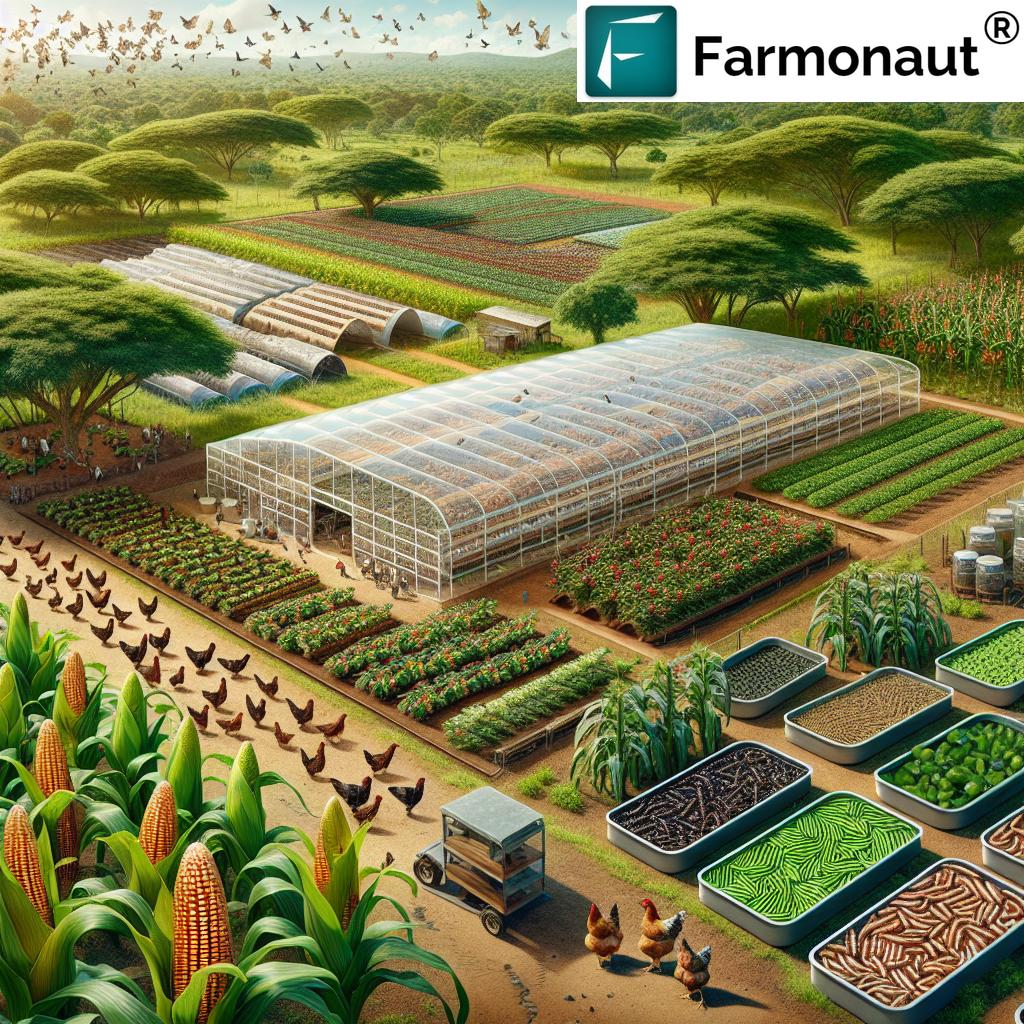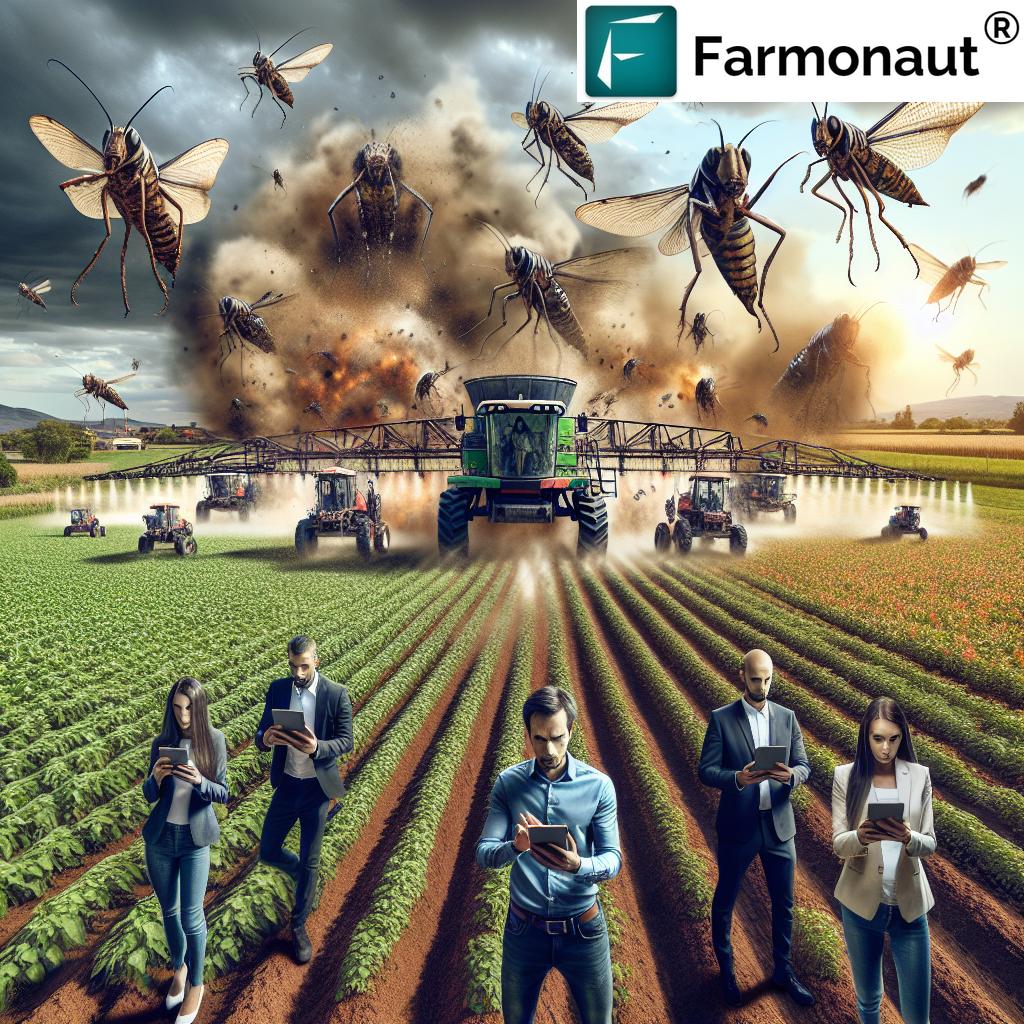Apis in agriculture: Africa 2025 Data APIs Playbook
“2025 playbook spans 54 African countries, integrating APIs for precision hives, traceability, and digital honey marketplaces.”
Apis in agriculture, apiculture farming, data africa api agriculture, is farming agriculture, is agriculture farming — these are the questions and key phrases shaping how Africa’s honey, crops, and food systems evolve in 2025. Apis — the genus that includes the western bee Apis mellifera — is central to productive agriculture. Bees pollinate a large share of fruits, vegetables, and oilseed crops. Apiculture (beekeeping) is therefore both a specialized farming activity and an essential ecosystem service supporting broader agricultural systems across Africa and beyond.
In 2025, digital agricultural data is converging with beekeeping. Continental and regional APIs aggregate weather forecasts, vegetation indices, pest and disease alerts, market prices, and land-use maps. Beekeepers now connect hive sensors for temperature, humidity, weight, and sound to these interoperable services. The result is smarter placement, better timing of migrations, improved forage selection, and transparent chains from lot to jar. This playbook explains how apis in agriculture and apiculture data are powering resilient food systems in Africa, and how digital tools in 2025 help beekeepers, cooperatives, and policy makers plan and act.
Table of Contents
- Why “apis in agriculture” matters in Africa 2025
- Farming vs. agriculture: roles, definitions, and the Apis lens
- 2025 Data Africa API architecture for apiculture
- Precision apiculture with IoT, weather, and remote sensing
- Traceability, digital marketplaces, and price APIs
- Pollinator health, pesticide risk, and habitat data
- Policy, finance, and ecosystem service valuation
- Use-Case x API Impact Matrix for Africa 2025 Apiculture Data
- Getting started with Farmonaut APIs, apps, and subscriptions
Why “apis in agriculture” matters in Africa 2025
Apis mellifera and related bees are the quiet drivers of agricultural productivity. They pollinate a large share of fruits, vegetables, and oilseed crops that keep food systems diverse and nutritious. In 2025, apiculture is not only about honey; it is about the stability of rural livelihoods, the resilience of ecosystems, and the efficiency of agricultural management across Africa. Digital data and APIs now extend beekeeping from a practical hive activity into a connected sector that includes forestry, soil, aquaculture, supply chains, and policy.
These developments reflect a shift from isolated farm management to landscape-level planning. Regional and continental data services — often referenced as “Data Africa” style APIs — provide interoperable access to weather, vegetation indices, pest and disease alerts, prices, maps, and extension advisories. When beekeepers combine these APIs with Internet of Things sensors in the hive, they can optimize timing, anticipate flowering phenology, and avoid forage gaps. The outcome is clear: more productive colonies, reduced risks, and stronger value chains across and beyond Africa.
- Central role of Apis: The western bee Apis mellifera is essential to pollinate crops and maintain ecosystem function.
- Converging technologies: APIs, remote sensing, and hive telemetry are converging to reshape apiculture farming.
- Transparent markets: Traceability records linked to QR codes support certified, biodiversity-friendly honey and better price discovery.
- Policy alignment: Payments for ecosystem services, carbon, and biodiversity schemes now include pollinator-friendly practices.
At the heart of this playbook is a simple idea: apis in agriculture is a data problem as much as a biological one. When we connect hive-level metrics to landscape and market intelligence, we transform beekeeping into a precision practice that supports broader agriculture.
Farming vs. agriculture: roles, definitions, and the Apis lens
Clarity about roles helps. Many ask: “is farming agriculture?” and “is agriculture farming?” The short answer is that they overlap but are not identical. Farming is the practical production of crops and livestock, including specialized activities such as apiculture. Agriculture is the wider sector that includes farming plus forestry, aquaculture, soil management, supply chains, extension services, and policy. Understanding the difference clarifies where digital tools act — on the hive and on the landscape.
Through the Apis lens, this distinction matters because:
- Farming (practical): Beekeepers manage hives, monitor temperature and humidity, balance brood and forage, and decide timing for migrations. This is where hive-level sensors and telemetry drive decisions day-to-day.
- Agriculture (wider sector): Land-use maps, forestry interfaces, pesticide advisories, market prices, and logistics affect where and when bees can thrive, and how honey reaches buyers. This is where APIs integrate cross-border data and policy.
Apis in agriculture must therefore bring both layers together. Precision hive management depends on agricultural APIs that provide weather and vegetation indices. Meanwhile, agricultural policy increasingly recognizes that pollinator health is an essential service supporting broader systems across Africa.
2025 Data Africa API architecture for apiculture
In 2025, a “Data Africa” style architecture is increasingly common. It is continental in scope but regional in delivery, and it is interoperable by design. The building blocks include:
- Weather and forecasts: Hourly and daily weather feeds inform hive placement and timing of inspections and migrations.
- Vegetation indices: Satellite-derived NDVI and related indices map forage quality and flowering phenology across landscapes.
- Pest and disease alerts: Regional advisories flag emerging risks such as foulbrood or invasive pests that affect bee health.
- Market prices: Price feeds from digital marketplaces provide signals for honey, wax, and related products.
- Land-use and habitat maps: Forestry, conservation areas, cropland layers, and corridors guide habitat planning and avoid pesticide exposure.
- Extension services: Agricultural extension alerts — including pesticide application schedules — help beekeepers avoid risky spray windows.
These components are unified by standards and APIs that:
- Aggregate multiple data sources across countries and regions.
- Provide standardized endpoints for telemetry, weather/NDVI, pest risk, identity/serialization, and price feeds.
- Connect to hive sensors and mobile apps through secure authentication and rate-limited requests.
- Reduce latency so that fresh data informs practical management within minutes for hive telemetry and daily cadence for satellite indices.
When beekeeping data and agricultural APIs are interoperable, the system can pull provenance records, seasonal yield estimates, pesticide-testing reports, and logistics updates into a single chain. That transparency increases premiums for certified honey and reduces transaction costs for smallholder apiculturists, strengthening rural livelihoods across Africa.
Farmonaut API and API Developer Docs provide programmatic access to satellite monitoring, weather, and other datasets that support apiculture workflows in 2025. We deliver real-time monitoring, AI-based advisory, and blockchain-based traceability through web, Android, and iOS apps as well as APIs, making satellite-driven insights accessible to beekeepers, businesses, and governments.
Precision apiculture with IoT, weather, and remote sensing
Beekeeping is evolving into precision apiculture. Hive-level sensors measure temperature, humidity, weight, and sound. These Internet of Things inputs are paired with weather, NDVI, and phenology to guide decisions. The flow of data is practical: beekeepers and extension services align timing of inspections, optimize placement, plan migrations, and select forage with fewer gaps.
Key workflows in 2025
- Telemetry and thresholds: Temperature/humidity profiles and brood acoustics flag issues such as queen failure or swarming. Weight curves show nectar flows and help anticipate harvest timing.
- Combining remote sensing: NDVI time series indicate vegetation health. When a spike aligns with local flowering calendars, a nectar flow is likely. Beekeepers can move hives or prepare supers in advance.
- Weather-aware planning: Forecasts influence inspections and transport. Avoid moving colonies during high heat or heavy rain. Use cool nights to reduce stress during migrations.
- Forage selection: Land-use maps and species distribution layers support decisions about proximity to diverse forage — fruits, vegetables, and oilseed crops — while avoiding pesticide-intensive zones.
Example: when NDVI in a target area crosses a set threshold and weather forecasts show low wind and heat stress for the week, the system triggers an alert to move hives near a flowering belt. When weight data begins to climb, the beekeeper confirms a nectar flow. This loop helps avoid forage gaps and smooths colony stress.
Because connectivity is uneven in rural regions, well-designed systems buffer data locally and sync when a signal returns. Interoperable standards ensure that telemetry, weather, and maps are available even with mixed devices and apps.
To simplify onboarding and accelerate smarter management, Farmonaut Large-Scale Farm Management helps agricultural teams organize monitoring across sites and seasons. Beekeeping supervisors can align hives with forage blocks, schedule scouts, and integrate alerts into daily operations. For landscape and plantation planning, Farmonaut Crop Plantation & Forest Advisory supports species selection, soil considerations, and long-term habitat management that benefits pollinators.
Traceability, digital marketplaces, and price APIs
Honey markets in 2025 reward transparency and quality. APIs enable traceability — from hive to jar — by linking batch IDs to QR-coded records. These records pull provenance, pesticide-testing reports, and seasonal yield estimates from interoperable databases. Digital marketplaces then integrate regional price feeds and logistics data, which reduces transaction costs and supports smallholders across Africa.
How traceability works with APIs
- Identity and serialization: Each lot receives a unique batch ID linked to a hive, time window, and location (e.g., geohash). QR codes connect consumers and buyers to the record.
- Records and events: EPCIS-style events document extraction, filtration, testing, and packaging. APIs push and pull these events to authorized systems.
- Testing and reports: Pesticide and quality reports are attached to the lot. Automated checks flag anomalies and hold the batch if needed.
- Transparency and premiums: Certified, biodiversity-friendly honey earns higher prices and grows trust across chains.
Farmonaut Traceability uses blockchain to secure records across the supply chain. We design systems that are practical for beekeepers yet robust for buyers and regulators, with mobile-ready scans, tamper-evident logs, and API integrations that scale from cooperative models to national exporters. For logistics and operations, Farmonaut Fleet Management helps reduce transport costs and improve timing when moving hives, jars, or bulk drums to hubs.
Digital marketplaces that integrate price feeds and logistics status become more efficient. Beekeepers and buyers gain a shared view of offer and demand across regions. Price spread reduction improves fairness and predictability. These systems also support cooperative business models, where shared identity and traceability help smallholder apiculturists present unified lots and meet quality standards for export.
Pollinator health, pesticide risk, and habitat data
Pollinator health remains a critical constraint. Exposure to pesticides, habitat loss, invasive species, and climate-driven shifts in flowering timing strain colonies. Data APIs support mitigation at multiple scales — from the hive to the landscape.
Risk mitigation with data in 2025
- Pesticide schedules: Extension advisories and farm management systems publish spray plans. When beekeepers subscribe to these feeds, they can move or secure hives as needed.
- Habitat and corridors: Land-use and forestry maps identify pollinator corridors and priority restoration sites. Overlaying NDVI and soil data helps select areas with high potential forage.
- Climate-phenology shifts: Flowering timing responds to weather anomalies. Combining forecasts and remote sensing phenology helps anticipate nectar flows and avoid gaps.
- Health alerts: Regional pest and disease alerts inform monitoring for foulbrood, mites, or invasive species.
Landscape planning aligns farming and forestry to reduce conflicts. For example, avoiding pesticide drift requires buffer zones and shared calendars. Coordinated planning increases resilience, supports biodiversity, and stabilizes yield across crops dependent on pollination. To formalize this approach, agricultural stakeholders are adopting interoperable data standards and shared governance so that beekeepers can access consistent, reliable information across borders.
Farmonaut Carbon Footprinting and environmental impact monitoring help quantify ecosystem benefits from pollinator-friendly practices at farm and regional levels. For forest and habitat planning, Farmonaut Crop Plantation & Forest Advisory supports seasonal and site-based decisions that sustain nectar sources and shelter.
“Framework highlights 4 pillars—data APIs, precision apiculture, traceability, marketplaces—standardizing cross-border datasets across 5 African regions.”
Policy, finance, and ecosystem service valuation
Policy in 2025 is catching up to the ecosystem value of pollinators. Payment-for-ecosystem-services programs now consider practices that protect bees and enhance biodiversity. Carbon and biodiversity incentives often include flowering strips, reduced pesticide risk, and native habitat restoration. APIs reduce the verification cost by feeding independent environmental data into monitoring platforms. This opens participation to smallholders who could not afford complex auditing in the past.
- Verification data: Satellite vegetation indices, land-use classifications, and weather data provide independent evidence of managed habitats and phenology trends.
- Traceable practices: Blockchain-backed records document site-level actions like reduced-spray windows or habitat establishment.
- Finance access: Satellite-based verification supports loans and insurance for apiculture and associated crops by reducing fraud and providing objective observations.
To help teams engage with finance, Farmonaut Crop Loan & Insurance uses satellite-based verification to streamline assessments, reduce risks for lenders, and increase access for rural producers. As apiculture integrates deeper with agriculture, this financial inclusion becomes a practical priority, especially for smallholder beekeepers who invest in modern hives, sensors, and traceability.
At the national level, governments and agencies rely on agricultural data standards to maintain cross-border comparability. This includes clear definitions for identity and serialization, consistent endpoints for weather and NDVI, and shared taxonomies for pest and disease alerts. With these standards, policy makers can align regional programs, forecast supply, and measure outcomes such as colony loss reduction or traceability match rates.
Use-Case x API Impact Matrix for Africa 2025 Apiculture Data
This matrix summarizes common apiculture use cases, representative API/data sources, and estimated outcomes. Values reflect typical ranges observed in 2025 deployments across Africa, with an emphasis on interoperable, regional coverage.
| Use case | API/data source | Key endpoints | Sample data fields | Estimated KPI impact | Data freshness/latency | Geographic coverage | Integration effort | Cost range (USD/month) | SLA uptime |
|---|---|---|---|---|---|---|---|---|---|
| Precision hive monitoring | Hive IoT + weather APIs | Telemetry; weather | Temp, humidity, weight, brood acoustics | Yield +5–12%; colony loss −10–20% | 5–15 min; daily | Countries: 15–30 | Medium | $50–$300 | 99.0–99.9% |
| Forage/pollination mapping | Satellite NDVI + land-use maps | Weather/NDVI; maps | NDVI, phenology index, geohash, soil class | Yield +5–10%; colony loss −8–15% | Daily; weekly | Countries: 20–30 | Medium | $80–$400 | 99.0–99.5% |
| Disease/pest alerts | Regional extension advisories | Pest risk; alerts | Disease code, severity, zone, window | Colony loss −10–20% | Daily; weekly | Countries: 15–25 | Low | $50–$150 | 99.0–99.9% |
| Traceability lot-to-jar | Blockchain + identity APIs | Identity/serialization | Batch ID, QR, EPCIS events, provenance docs | Traceability match rate 80–95% | 5–15 min; daily | Countries: 20–30 | Medium–High | $100–$500 | 99.5–99.9% |
| Digital marketplace pricing | Regional price feeds + logistics APIs | Price feeds; status | Commodity price, grade, location, ETA | Price spread reduction 8–15% | Daily; weekly | Countries: 15–25 | Medium | $50–$250 | 99.0–99.5% |
SEO note: concise labels, keyword-rich headers, and scannable comparisons help answer intent for “apiculture data APIs Africa 2025” and related searches such as apiculture farming price feeds, maps, and pest/disease alerts.
Getting started with Farmonaut APIs, apps, and subscriptions
We design our platform to make satellite-driven insights and traceability affordable and accessible. Our web app, Android and iOS apps, and APIs allow users to manage operations remotely and integrate endpoints into existing systems. We are a satellite technology provider — not an online marketplace, not a manufacturer or seller of farm inputs or machinery, and not a regulatory body. Our role is to provide data, advisory, traceability, and resource management tools that your teams can trust.
- APIs and Docs: Start at Farmonaut API and Developer Docs.
- Traceability: Learn how blockchain-backed provenance secures lot-to-jar records with Farmonaut Traceability.
- Operations: Reduce transport and monitoring costs with Fleet Management and plan landscapes with Large-Scale Farm Management.
- Environmental value: Track climate and biodiversity co-benefits using Carbon Footprinting.
- Finance readiness: Improve access to credit and risk coverage with Crop Loan & Insurance.
FAQ: 2025 Apiculture Data, APIs, and Africa’s food systems
1) What does “apis in agriculture” mean in practice?
It refers to integrating the Apis genus — especially the western honey bee (Apis mellifera) — into agricultural data ecosystems. In practice, it means beekeepers use digital APIs for weather, vegetation indices, pest/disease alerts, and price feeds, while also connecting hive telemetry. This combination supports productive farming and resilient food systems.
2) Is farming agriculture? Is agriculture farming?
They overlap but are not the same. Farming is the practical production of crops and livestock, including apiculture. Agriculture is the wider sector that includes farming plus forestry, aquaculture, soil management, supply chains, extension, and policy. Clarifying this difference helps assign roles and plan data flows.
3) Which data endpoints matter most for apiculture farming in 2025?
- Telemetry (temperature, humidity, weight, sound)
- Weather and NDVI (forecast and vegetation health)
- Pest/disease risk (regional alerts, severity, windows)
- Identity/serialization (batch IDs, geohash, EPCIS events)
- Price feeds (regional market prices, grades, logistics ETA)
4) How do APIs help avoid forage gaps and improve timing?
Combining remote sensing phenology with weather forecasts highlights likely nectar flows. When signals align, beekeepers can prepare supers, relocate hives, and schedule inspections. Weight curves verify the flow, and alerts help respond quickly if conditions change.
5) How can beekeepers manage pesticide risk?
Subscribe to extension advisories and spray schedules, overlay land-use maps to identify safer placements and corridors, and use traceability to document compliant practices. APIs create a shared calendar that reduces conflicts between farming operations and beekeeping.
6) Do digital marketplaces really increase price transparency?
Yes. Integrating regional price APIs and logistics status reduces search and negotiation costs, improves grade/price clarity, and narrows the price spread. Traceability adds confidence, often earning premiums for certified, biodiversity-friendly honey.
7) What about connectivity in rural areas?
Systems should cache data offline, sync when coverage returns, and use compact payloads. Lightweight mobile apps and SMS/USSD fallbacks can extend reach. Interoperable standards avoid lock-in and allow mixed devices.
8) How do policies include pollinator-friendly practices?
Many programs count flowering strips, reduced-spray windows, and habitat restoration as eligible activities. APIs feed independent satellite and weather data into monitoring systems for lower-cost verification, opening access for smallholders.
9) Where can I learn how to connect and use APIs?
We provide self-serve documentation and tutorials. Explore the Farmonaut API and Developer Docs to integrate weather, satellite, and traceability endpoints into your apiculture stack.
Putting it all together in Africa, 2025 and beyond
Across Africa’s diverse regions, apiculture is aligning with agricultural data systems to support robust food systems. The path forward is practical: connect hives to telemetry; combine weather, NDVI, and phenology; subscribe to pest and pesticide alerts; implement traceability; and link to regional price feeds and logistics. APIs and standards make these steps interoperable across borders and scalable from single beekeepers to cooperatives and national programs.
As we move beyond 2025, the same pillars — data APIs, precision apiculture, traceability, and marketplaces — will continue to reshape operations. With better planning, more transparent value chains, and policies that recognize ecosystem services, apiculture farming can deliver both honey and resilience for agriculture at large. The Apis genus remains central to productive systems. Digital tools ensure that its role is measured, supported, and rewarded.
Keyword notes for clarity
Readers often search for terms like “apis in agriculture, apiculture farming, data africa api agriculture, is farming agriculture, is agriculture farming.” In this playbook, we showed how these topics converge in 2025. The focus is practical: connect data to decisions, link hive management to landscape planning, and use interoperable standards that work across African regions and beyond.













